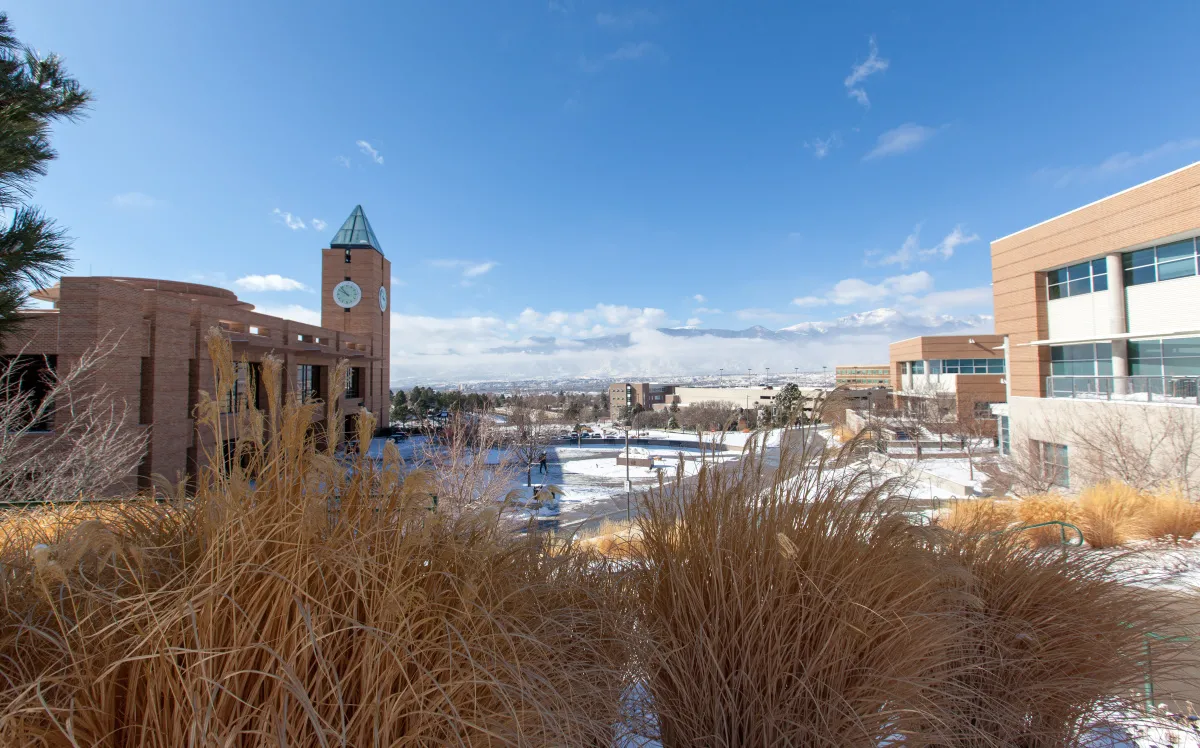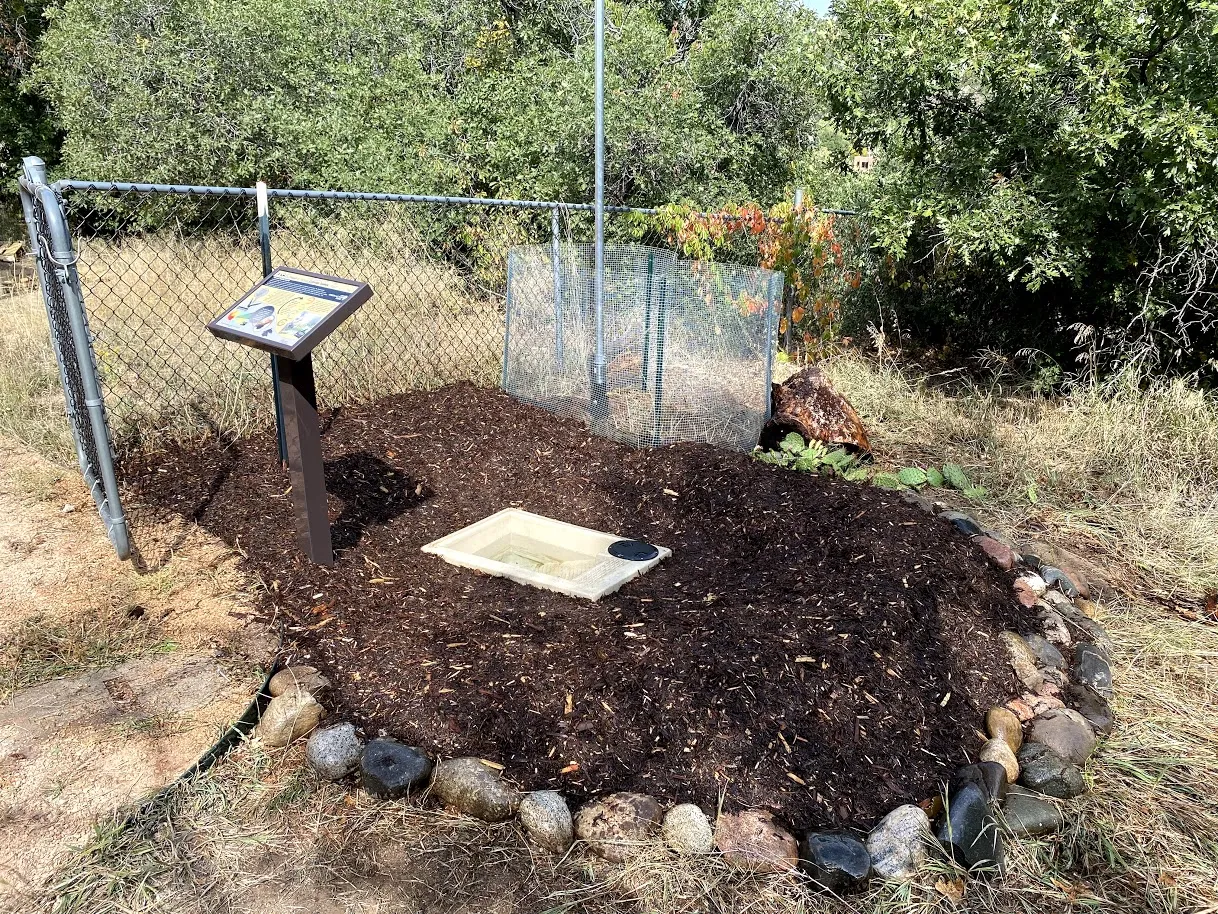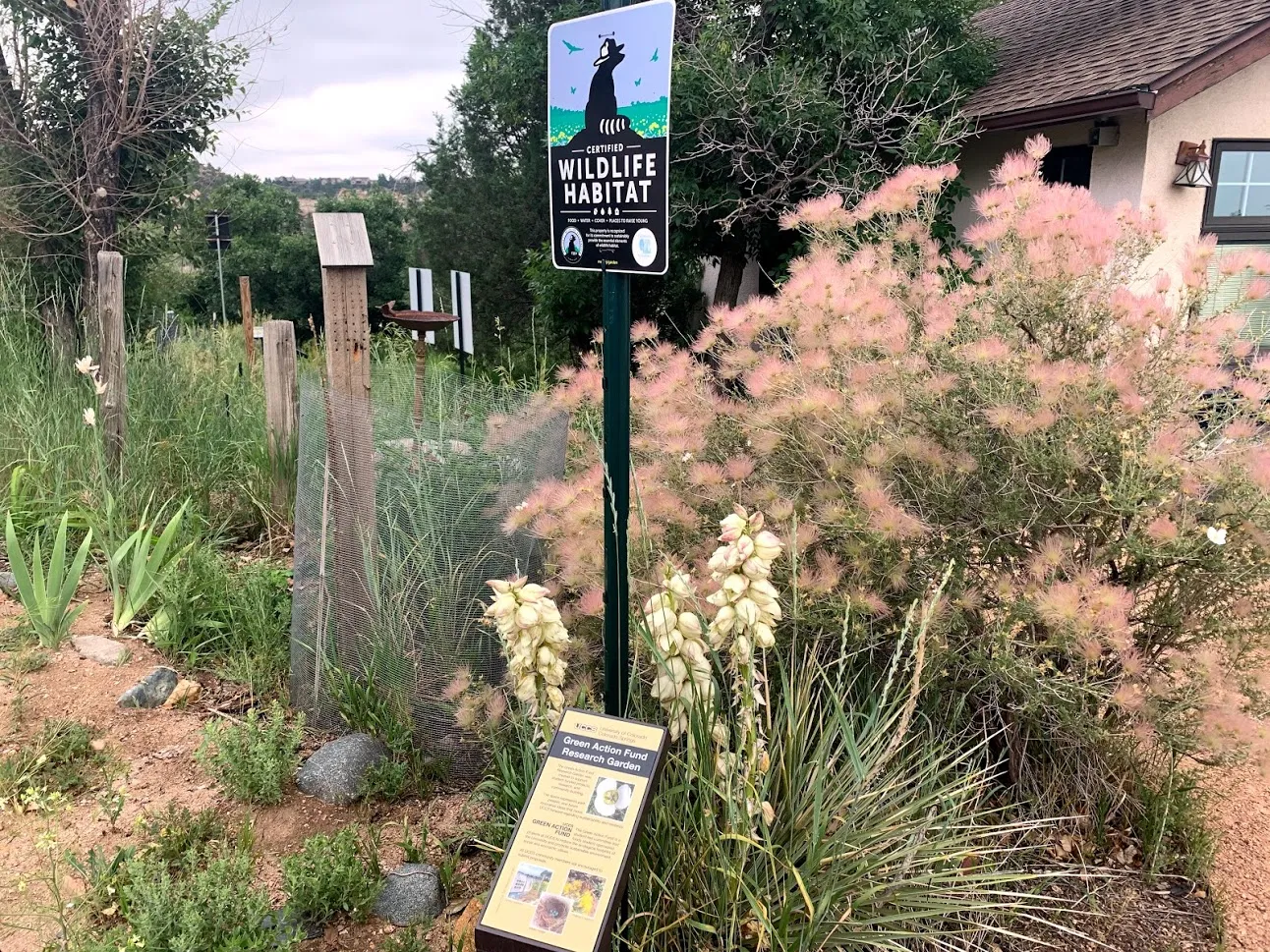
National Wildlife Federation - Wildlife Habitat Certification
Here is what your wildlife garden should include:
-
Food
Native plants provide food eaten by a variety of wildlife. Feeders can supplement natural food sources.
-
Water
All animals need water to survive, and some need it for bathing or breeding as well.
-
Cover
Wildlife need places to take shelter from bad weather and places to hide from predators or hunt for prey.
-
Places to Raise Young
Wildlife need resources to reproduce, and to protect and nourish their young.
-
Sustainable Practices
Maintain your yard or garden in natural ways to ensure soil, air, and water stay healthy and clean.
Habitat Creation at SDH
Wildlife Water Guzzler

A wildlife guzzler "is a term used to describe self-filling, constructed watering facilities that collect, store, and make water available for wildlife." The wildlife guzzler at the Sustainability Demonstration House is on the eastern side between SDH and the Farmhouse. This is a well-used path for local wildlife, and provides a water source for animals that may not be able to reach a traditional bird bath and in an area where water sources are scarce.
Check out the wildlife camera photos here! They include mule deer, desert cottontail rabbits, bobcats, coyotes, and many species of birds - scrub jay, robin, towhee, magpie, flicker, and more!
